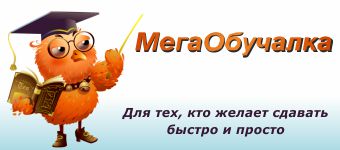 |
Главная |
ELECTRICAL MEASURING UNITS AND INSTRUMENTS
|
из
5.00
|
TEXT
THE CONCEPT OF ELECTRICAL CURRENT
In the beginning of the 17th century Sir William Gilbert discovered that many substances could be electrified by friction. Gilbert named this effect "electric" after the word "electron" — the Greek name for amber. In 1756 the great Russian scientist M. V. Lomonosov was the first to make theoretical analysis of electrical phenomena.
 At present the nature of electrification is explained by the electron theory. According to the modern theory all matter is composed of atoms or tiny particles. There are many kinds of atoms. Each atom consists of a nucleus, a small positively charged mass and a number of lighter negatively charged particles called electrons, which revolve around the nucleus. Normally each atom of a substance is electrically neutral, or it has equal amounts of negative and positive charges, i.e. produces no electrical effects. If the number of negative charges is not equal to the number of positive charges, the matter will produce electrical effects.
At present the nature of electrification is explained by the electron theory. According to the modern theory all matter is composed of atoms or tiny particles. There are many kinds of atoms. Each atom consists of a nucleus, a small positively charged mass and a number of lighter negatively charged particles called electrons, which revolve around the nucleus. Normally each atom of a substance is electrically neutral, or it has equal amounts of negative and positive charges, i.e. produces no electrical effects. If the number of negative charges is not equal to the number of positive charges, the matter will produce electrical effects.
When an electric charge is at rest it is spoken of as static electricity, but when it is in motion it is referred to as an electric current. In most cases, an electric current is described as a flow of electric charges along a conductor.
Not all substances are good conductors of electricity, as a general rule metals are good conductors of electricity, whereas nonmetals are poor conductors. The poorest of conductors are commonly called insulators or nonconductors. There are a large number of substances that are neither good conductors of electricity nor* good insulators. These substances are called semi-conductors.
An electric current which flows in the same direction through a conductor or a current which does not change its polarity is called a direct current or a continuous current. Its abbreviation is D. C. An alternating current (A. C.) flows first in one direction and then in the other.
An electric circuit is a path through which an electric current flows. This is a complete path along which electrons can transmit their charges. An electric circuit includes a battery, generator, or magnetic means for producing current flow. Some portion of the circuit is made to do useful work.
The circuit is said to be open when no charges can move due to a break in the path. The circuit is said to be closed when no break exists — when switches are closed and all connections are properly made.
Special symbols are used to show electrical systems. There is a wide range of these symbols. There are some of them which are used when we draw circuits. Look at Fig. 5. And now look at the diagram of series and parallel arrangements (Fig. 6).
УПРАЖНЕНИЯ
I. Найдите в тексте и выпишите:
1. интернационализмы; 2. «ложных друзей переводчика»; 3. термины по электричеству
II.Дайте краткие определения следующих понятий:
an atom, static electricity, electric current, direct current, alternating current, an electric circuit, an open circuit, a closed circuit
III.Выполните следующие действия:
1) draw circuit symbols;
2) draw series and parallel arrangements (cells in series, cells in parallel etc.)
IV.Проделайте опыты, изображенные на рис. 7, 8 и опишите их, используя данные слова и выраже
ния :

to rub, to demonstrate electrostatic attraction, pieces of paper, to electrify, a rod, a comb, to draw a comb through the hair, to become charged with electricity, to attract, to sparkle, sparks, in the dark room, to hear a cracking noise, a thin stream of water, a tap, to deflect, to electrify, a rod
Задание 9
Прочтите и переведите текст: TEXT
BATTERIES
 Batteries as sources of electrical energy are the result of a long series of experiments which started with the discoveries of Alessandro Volta, an Italian scientist, more than one hundred years ago. Today battery cells are manufactured in two common forms: (1) dry cells, used in flashlights, portable radios, etc., and (2) wet cells, used in automobiles, airplanes, boats, etc. The voltaic cell, as shown in Fig. 9, is composed of three parts, a pair of dissimilar metal plates called electrodes, a dilute acid solution called the electrolyte, and a nonconducting container called the cell,
Batteries as sources of electrical energy are the result of a long series of experiments which started with the discoveries of Alessandro Volta, an Italian scientist, more than one hundred years ago. Today battery cells are manufactured in two common forms: (1) dry cells, used in flashlights, portable radios, etc., and (2) wet cells, used in automobiles, airplanes, boats, etc. The voltaic cell, as shown in Fig. 9, is composed of three parts, a pair of dissimilar metal plates called electrodes, a dilute acid solution called the electrolyte, and a nonconducting container called the cell,
In a glass container filled with sulphuric acid there are two plates: one copper and the other zinc. If the two plates are connected by a copper wire, electricity will flow through it from the copper plate to the zinc plate. This may be shown by the wire becoming hot. If an ammeter is connected between the plates or electrodes, as they are now called, it will indicate that an electric current is flowing.
 The electrode from which electricity flows is termed the positive electrode and the receiving electrode is termed the negative electrode. Thus for the voltaic cell the copper plate is the positive electrode and the zinc plate the negative electrode. A copper wire will convey electricity and is called an electrical conductor. Copper, aluminium and silver are outstandingly good conductors. Conductors must be surrounded by protective material which does not conduct electricity and prevent it to leak away. Materials which do not conduct electricity are called electrical insulators; there are many common examples — glass, wood,
The electrode from which electricity flows is termed the positive electrode and the receiving electrode is termed the negative electrode. Thus for the voltaic cell the copper plate is the positive electrode and the zinc plate the negative electrode. A copper wire will convey electricity and is called an electrical conductor. Copper, aluminium and silver are outstandingly good conductors. Conductors must be surrounded by protective material which does not conduct electricity and prevent it to leak away. Materials which do not conduct electricity are called electrical insulators; there are many common examples — glass, wood,
rubber, some plastics, "insulation" tape.
Remember that faulty insulation is dangerous and leads to unwanted electrical flow and probably to local overheating.
One common form of cell is shown in Fig. 9. If two or more cells are connected together, they form what is called a battery (Fig. 10).
In this diagram the battery is composed of four dry cells connected in series. By series connection it is meant that the ( + ) terminal of one cell is connected to the (-) terminal of the next. The purpose in connecting two or more cells in series is to obtain a higher emf than that available with one cell alone.
Each cell produces an emf of 1.5 volts, so that if the voltmeter is connected to the points, it will indicate 1.5 volts between A and B, 30 volts between A and C, 4.5 volts between A and D and 6 volts between A and E.
The common flashlight contains several dry cells connected in series.
УПРАЖНЕНИЯ
I. Выпишите из текста интернационализмы.
II.Проанализируйте состав следующих слов:
flashlight, airplane, dissimilar, nonconducting, outstanding, unwanted, overheating, zinc-coated, container
III.Переведите словосочетания:
battery cell, dry cell, wet cell, metal plate, glass container, copper wire, zinc plate, a round carbon rod liquid electrolyte, a dilute acid solution.
IV.Подберите существительные к глаголам:
to be composed of wires
to produce plates
to connect electricity
to conduct acid solution
to contain batteries
to consist of an electrolyte, electrodes
to surround dry cells
to manufacture
V. Переведите на английский язык сочетания слов и
предложения:
источник электрической энергии; состоит из трех частей; наполненный серной кислотой; электрод называется положительным, если ...; медная проволока проводит электричество. Материалы, которые не проводят электричество, называются изоляционными. Чем больше элемент, тем больше электрический ток. Элементы, соединенные последовательно.
VI.Вставьте пропущенные слова и выражения:
1. A battery is a source of ... . 2. Battery cells are manufactured in ... . 3. The voltaic cell is composed of ... . 4. Dissimilar metal plates ... . 5. A dilute acid solution ... . 6. If an ammeter is connected ... . 7. The positive electrode is .... 8. The negative electrode is ... . 9. ... are good conductors. 10. ... are called electrical insulators. 11. Cells connected together form .... 12. Series connection means ... .
VII.Выполните следующее задание:
Describe the battery shown in Fig. 10.
ПОСЛЕ ЗАНЯТИЙ
DO YOU KNOW THAT ... ?
To Benjamin Franklin we owe the terms "plus" and "minus", "positive" and "negative" electricity.
The electric motor was invented by B. S. Jakobi in 1834. He also invented the first telegraph which printed letters.
The first electric lamp was invented in 1873 by A. N. Lodygin and the first arc lamp by P. N. Yablochkov in 1876.
Задание 10
Прочтите и переведите текст:
TEXT
ELECTRICAL MEASURING UNITS AND INSTRUMENTS
Any instrument which measures electrical values is called a meter. An ammeter measures the current in amperes. The unit is named after Andre Marie Ampere, a French scientist, who discovered a great number of facts about electricity over a hundred years ago. The abbreviation for the ampere is amp. A voltmeter measures the voltage and the potential difference in volts. The volt is named after Alessandro Volta, an Italian scientist.
 The current in a conductor is determined by two things, the voltage across the conductor and the resistance of the conductor. Every material object offers some resistance to the flow of an electron current through it. Good conductors like the metals, copper, silver and aluminium offer very little resistance, while nonconductors such as glass, wood and paper offer a very high resistance. The unit by which resistance is measured is called the ohm. The resistance in practice is measured with the ohmmeter. A wattmeter measures electrical power in watts. Very delicate ammeters are often used for measuring very small currents. A meter whose scale is calibrated to read a thousandth of an ampere is called a milliarnmeter. One whose scale is calibrated in millionth of an ampere is called a microammeter or galvanometer.
The current in a conductor is determined by two things, the voltage across the conductor and the resistance of the conductor. Every material object offers some resistance to the flow of an electron current through it. Good conductors like the metals, copper, silver and aluminium offer very little resistance, while nonconductors such as glass, wood and paper offer a very high resistance. The unit by which resistance is measured is called the ohm. The resistance in practice is measured with the ohmmeter. A wattmeter measures electrical power in watts. Very delicate ammeters are often used for measuring very small currents. A meter whose scale is calibrated to read a thousandth of an ampere is called a milliarnmeter. One whose scale is calibrated in millionth of an ampere is called a microammeter or galvanometer.
Whenever an ammeter or voltmeter is connected to a circuit to measure electric current or potential difference the ammeter must be connected in series and the voltmeter in parallel.
As illustrated in Fig. 11, the ammeter is so connected that all of the electron current passes through it. To prevent a change in the electron current when such an insertion is made, all ammeters must have a low resistance. Most ammeters therefore have a low resistance wire, called a shunt, connected across the armature coil. A voltmeter, on the other hand, is connected across that part of the circuit for which a measurement of the potential difference is required. If the potential difference between the ends of the resistance R is wanted, the voltmeter is connected as shown.
УПРАЖНЕНИЯ
I. Выпишите из текста термины, относящиеся к электричеству.
II. На основе текста составьте краткие определения данных понятий:
A voltmeter. The volt. The ampere. The ohm. A galvanometer.
Например :
An ammeter.—An ammeter is an instrument used to measure the current.
III.Ответьте на вопросы:
1. How is a voltmeter connected to the circuit?
2. What meter do we connect to the circuit in series?
3. Why must an ammeter have a low resistance?
4. Across what part of the circuit is a voltmeter connected?
5. 5. What instruments are used to measure an electric current and potential difference?
Задание 11
|
из
5.00
|
Обсуждение в статье: ELECTRICAL MEASURING UNITS AND INSTRUMENTS |
|
Обсуждений еще не было, будьте первым... ↓↓↓ |

Почему 1285321 студент выбрали МегаОбучалку...
Система поиска информации
Мобильная версия сайта
Удобная навигация
Нет шокирующей рекламы

